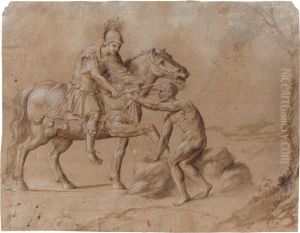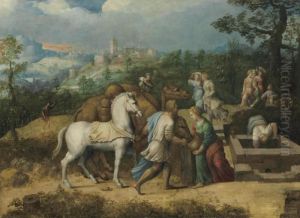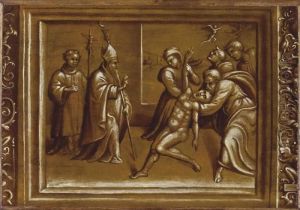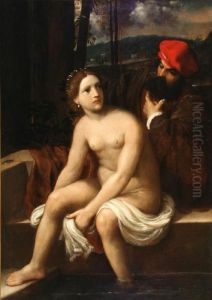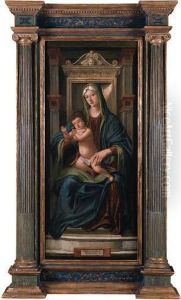Girolamo Da Treviso Paintings
Girolamo Da Treviso was an Italian painter, draftsman, and architect active during the High Renaissance period. Born around 1508 in Treviso, a town in the Veneto region of Italy, he is often referred to as Girolamo Da Treviso the Younger to distinguish him from an earlier painter with the same name. His early life and training are not well-documented, but he is thought to have been a pupil of the painter Pier Maria Pennacchi in Treviso, and he may have spent some time in the workshop of Giovanni Bellini in Venice, which was a major center of the arts during this period.
His work as an artist was multifaceted, encompassing painting, fresco, and architectural design. Girolamo’s style was influenced by various prominent artists of the time, including Raphael, whose work he encountered in his travels. He was known for his versatility and was adept at adapting his style according to the regional preferences and artistic influences he encountered throughout his career.
In the 1520s, Girolamo began receiving commissions for altarpieces and other religious works in Treviso and the surrounding areas. His paintings from this period reveal a harmonious blend of Venetian color sensibilities with the compositional techniques characteristic of the Roman school. By the 1530s, Girolamo was in Bologna, where he worked on several projects, including a now-lost fresco cycle for the Palazzo del Podestà.
In 1538, Girolamo moved to England, where he entered the service of King Henry VIII. His activities in England included working on the decoration of the royal palaces and designing fortifications for the king during a period when Henry was concerned about possible invasion threats. Unfortunately, Girolamo’s time in England would prove to be short-lived; he was killed during the siege of Boulogne in 1544, thereby cutting short a promising artistic career.
Despite his premature death, Girolamo Da Treviso left behind a body of work that reflects the international nature of Renaissance art. His paintings can be found in various collections, including the National Gallery in London and the Ashmolean Museum in Oxford. His architectural and engineering contributions, although less well-known, also demonstrate the broad range of his talents and the role he played in the exchange of ideas between Italy and England during the Renaissance.
